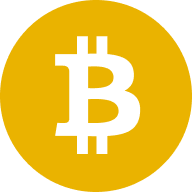BitTorrent (BTT) is a digital currency that has rapidly gained popularity in the crypto market. It originated from the widely used BitTorrent network, which is known for peer-to-peer file sharing.
What is BTT?
BTT is a cryptocurrency introduced by BitTorrent in 2019. It functions as a payment method within the BitTorrent network, allowing users to purchase faster download speeds with BTT. It also serves as a means to reward individuals who contribute their storage capacity to the BitTorrent network.
As a TRC-10 token, BTT operates on the Tron blockchain. Tron is a blockchain platform engineered to provide scalability, decentralization, and high-performance capabilities.
The BitTorrent team
Bram Cohen and Ashwin Navin founded BitTorrent protocol and established BitTorrent, Inc in 2004. Following BitTorent’s acquisition by Tron, Justin Sun, founder of Tron, has since served as BitTorrent's CEO. As a young entrepreneur, Sun quickly rose to the limelight as one of the most accomplished personalities in the blockchain industry. The 53-man team currently involved in the technical aspects of the project, operations, and upgrades consists of engineers, and scientists mostly working out of the United States.
How does BitTorrent work?
BitTorrent operates by utilizing a decentralized network of nodes to store and index data. The data may include a wide range of information, including blog posts, social media updates, and financial transactions. The BitTorrent network utilizes a Proof of Stake (PoW) consensus mechanism to ensure security. This means nodes receive rewards for securing the network by staking BTT tokens.
Users can use BTT tokens to expedite their downloads when downloading files from the BitTorrent network. The speed of the downloads is directly proportional to the number of BTT tokens a user stakes.
BitTorrent's utility token: BTT
BTT is the utility token for the BitTorrent network, operating on the Tron blockchain as a TRC-10 token. It functions primarily as a payment method to facilitate faster downloads on the BitTorrent network.
BTT tokenomics
The total supply of BTT tokens is 990 billion. Out of the total, 6 percent was sold during the initial coin offering (ICO), 2 percent was allocated to the BitTorrent team, and 9 percent was distributed among the seed investors. Over time, the remaining 83 percent of BTT tokens will be distributed through various methods such as staking, airdrops, and rewards for utilizing the BitTorrent network.
How to stake BTT
OKX provides a range of staking plans for BTT. To stake BTT on OKX, start by creating an OKX account. Once logged in, navigate to OKX Earn. Search for "BTT" on the search bar and select your preferred staking plan. Then, click Subscribe. The duration your BTT tokens will be locked depends on the staking plan you opt for. During this period, you will receive additional BTT tokens as rewards.
BTT’s use cases
BTT has several use cases, such as:
- BTT can be used to purchase faster download speeds on the BitTorrent network.
- Users can earn passive income in the form of BTT tokens by offering storage space for the BitTorrent network.
- BTT can power decentralized applications (dApps) on the BitTorrent network. This includes decentralized file storage, gaming, and decentralized finance (DeFi).
- BTT can be staked to earn additional BTT tokens as rewards. Staking involves the act of locking up your BTT tokens on an available staking platform, such as OKX Earn, to receive token rewards.
Distribution of BTT
The BTT token distribution is as follows:
- 6 percent was sold during the initial coin offering (ICO) in January 2019.
- The BitTorrent team received a 2 percent share.
- Seed investors were given 9 percent.
- The remaining 83 percent will be distributed gradually in various forms such as staking rewards, airdrops, and incentives for utilizing the BitTorrent network.
BitTorrent’s future expansion plan
The BitTorrent team plans to enhance the BitTorrent network by introducing new features and simplifying user participation. This involves enhancing compatibility with additional file formats, improving file search functionality, and streamlining file-sharing capabilities.
The BitTorrent team aims to enhance the utilization of BTT by expanding its acceptance as a payment method. One way to achieve this is by forming partnerships with merchants and simplifying users' purchasing process of BTT.
The team behind BitTorrent also plans to expand into new markets. This includes regions such as Asia, Africa, and Latin America.
















Socials